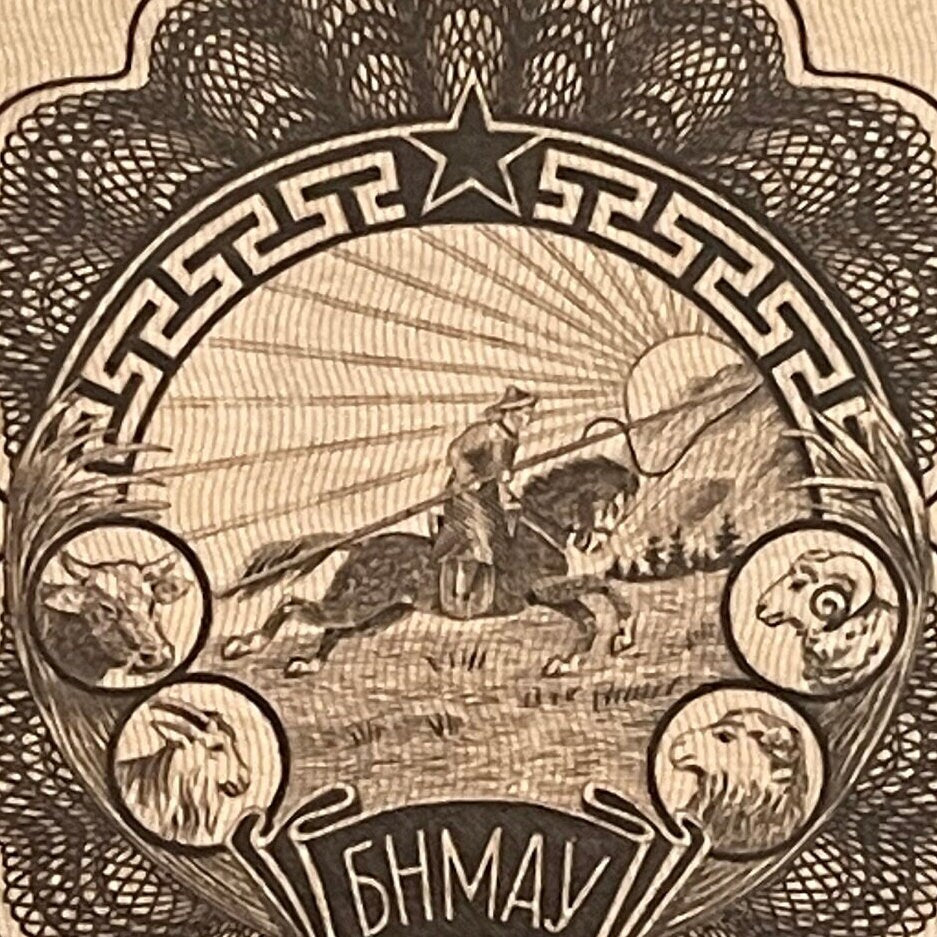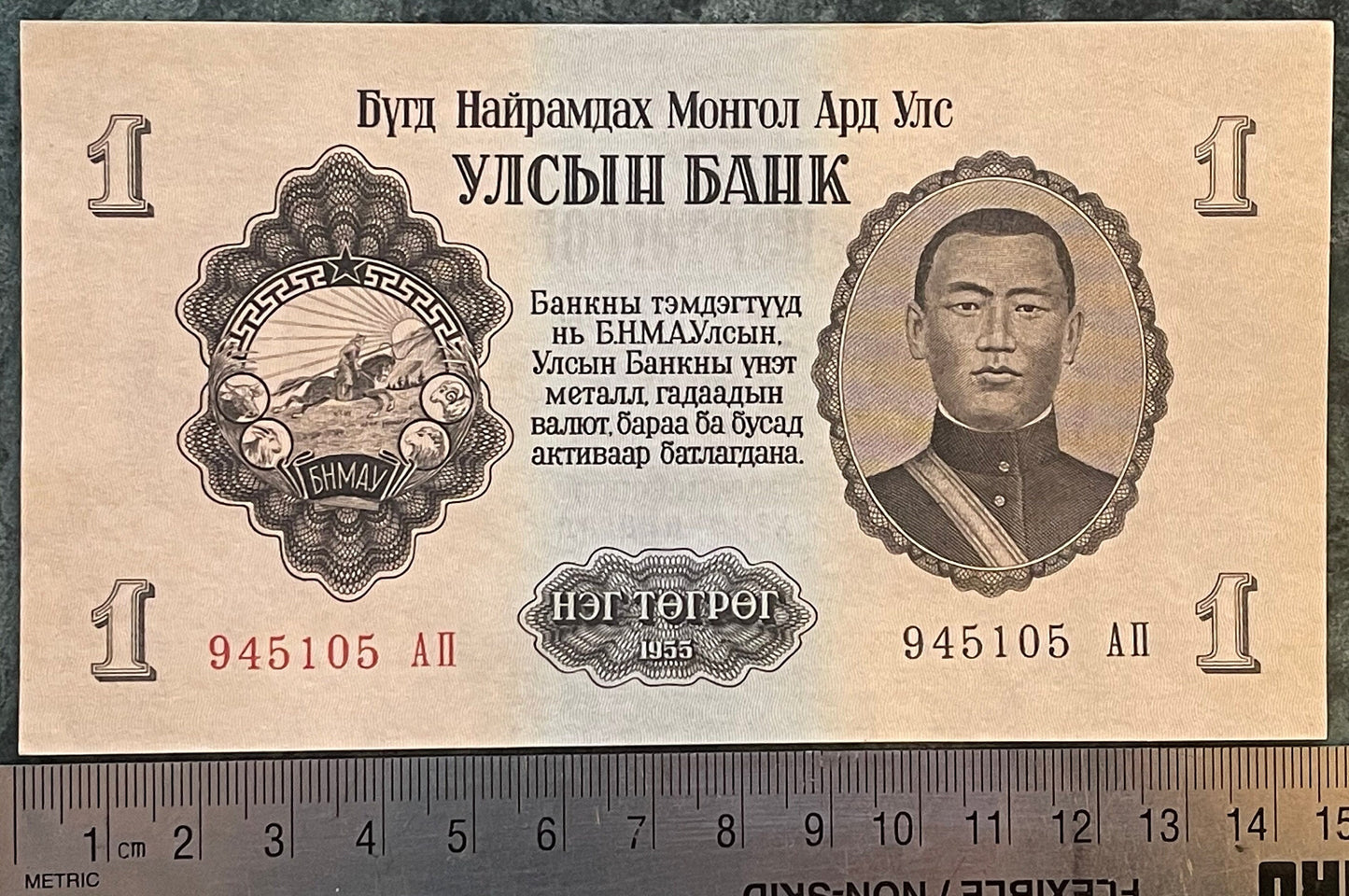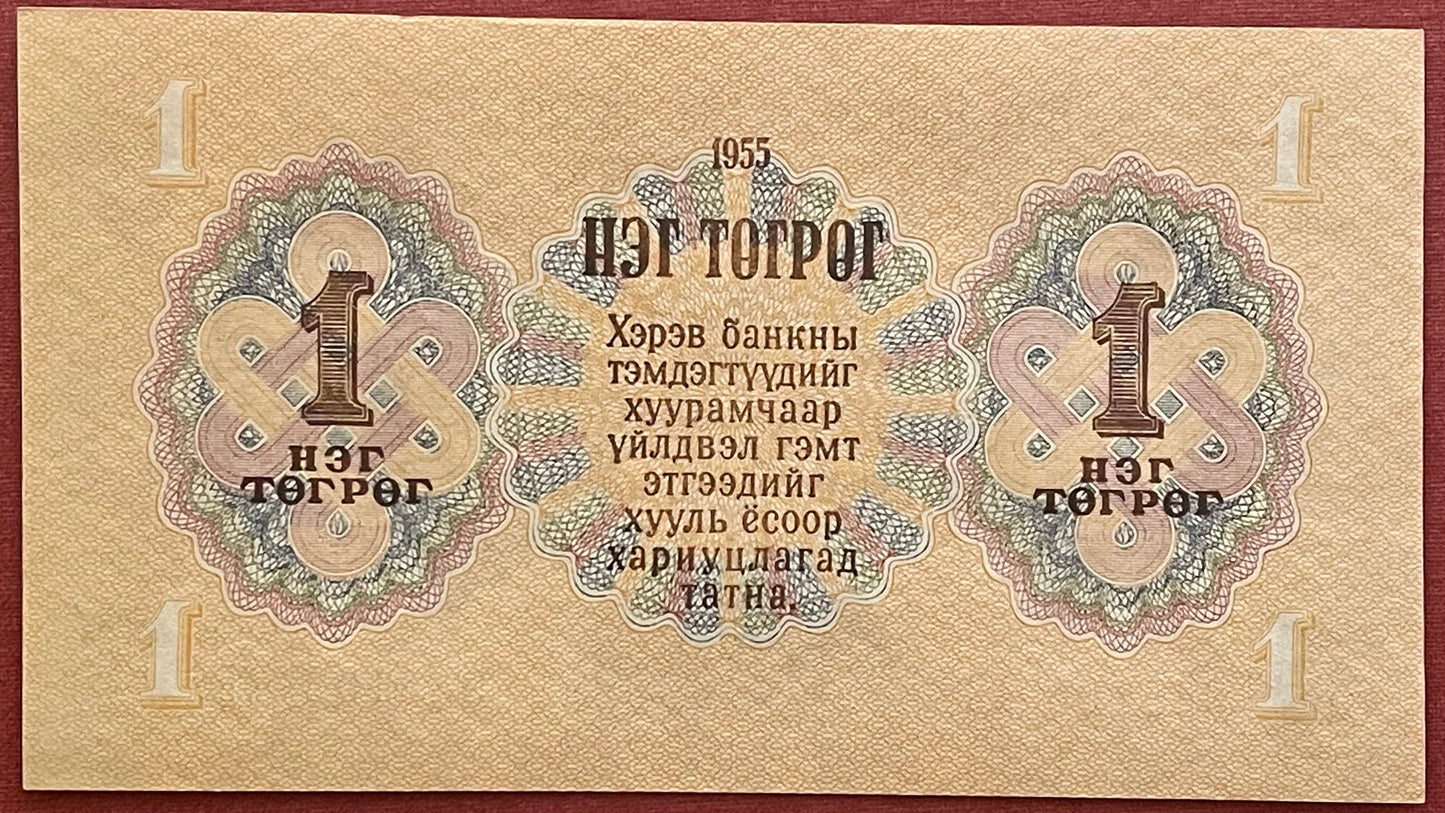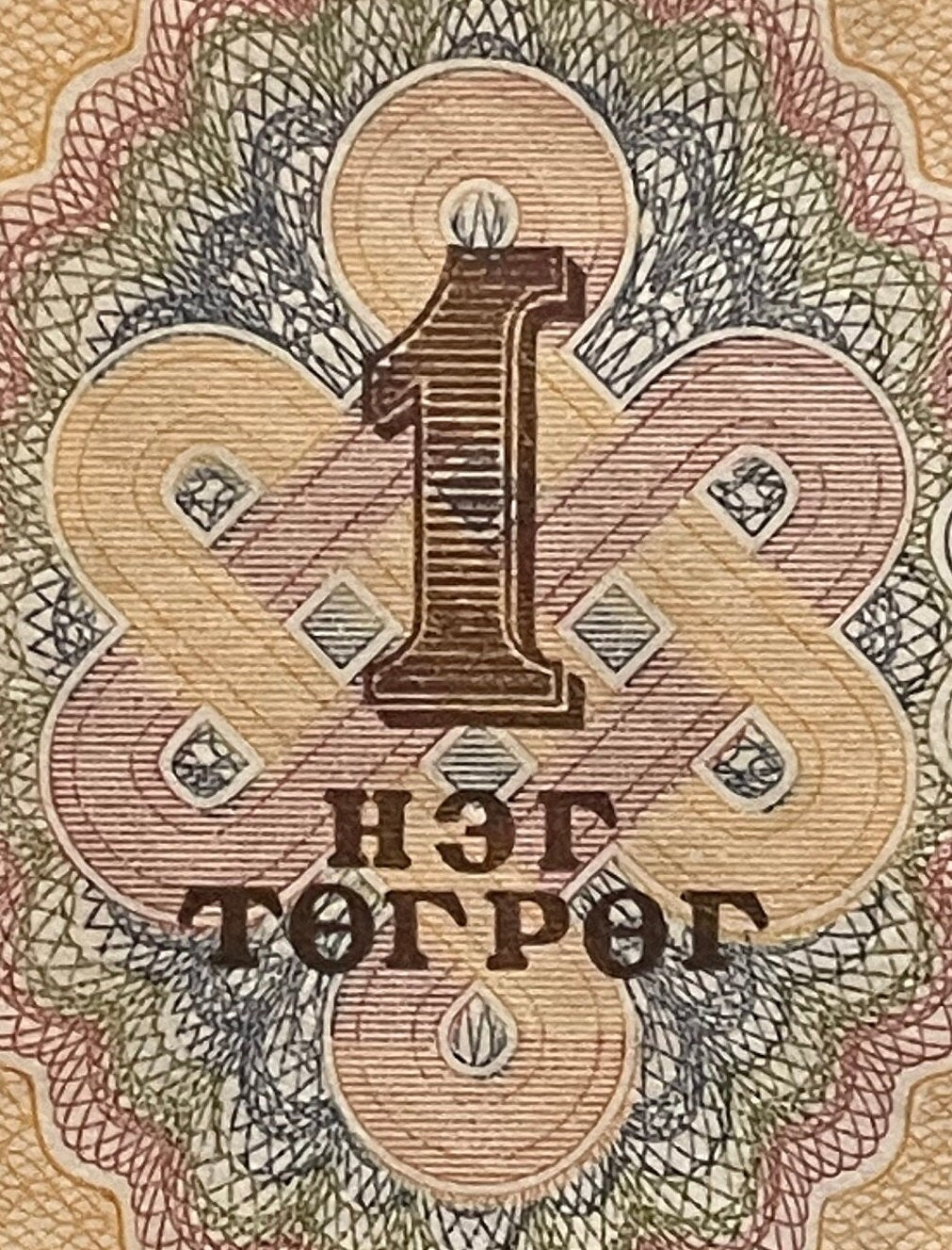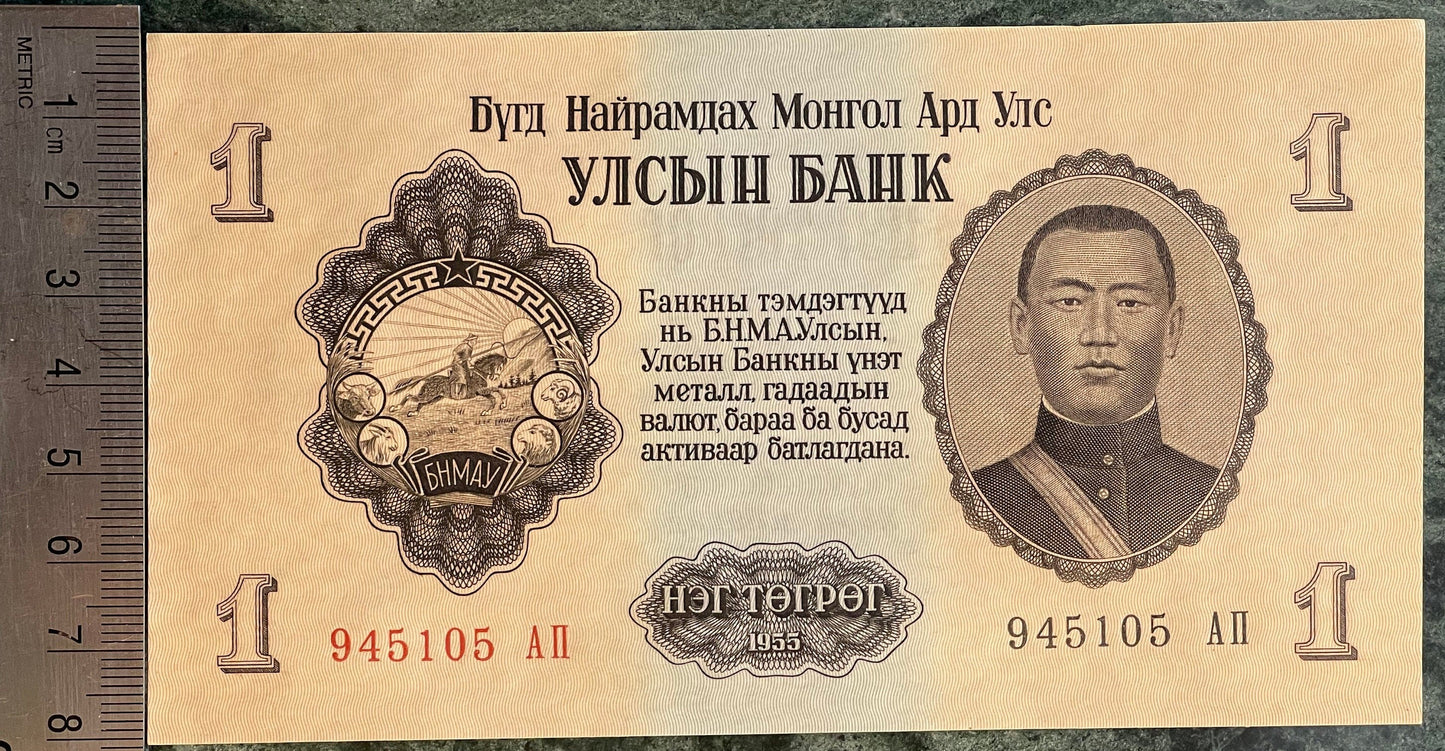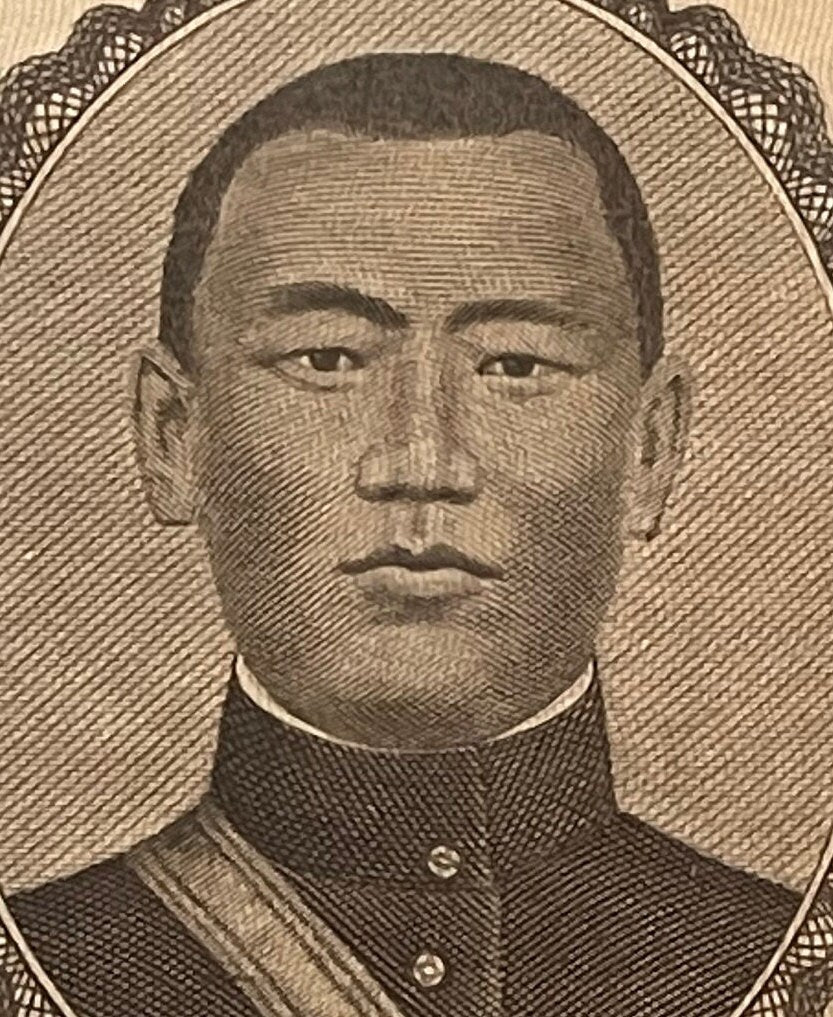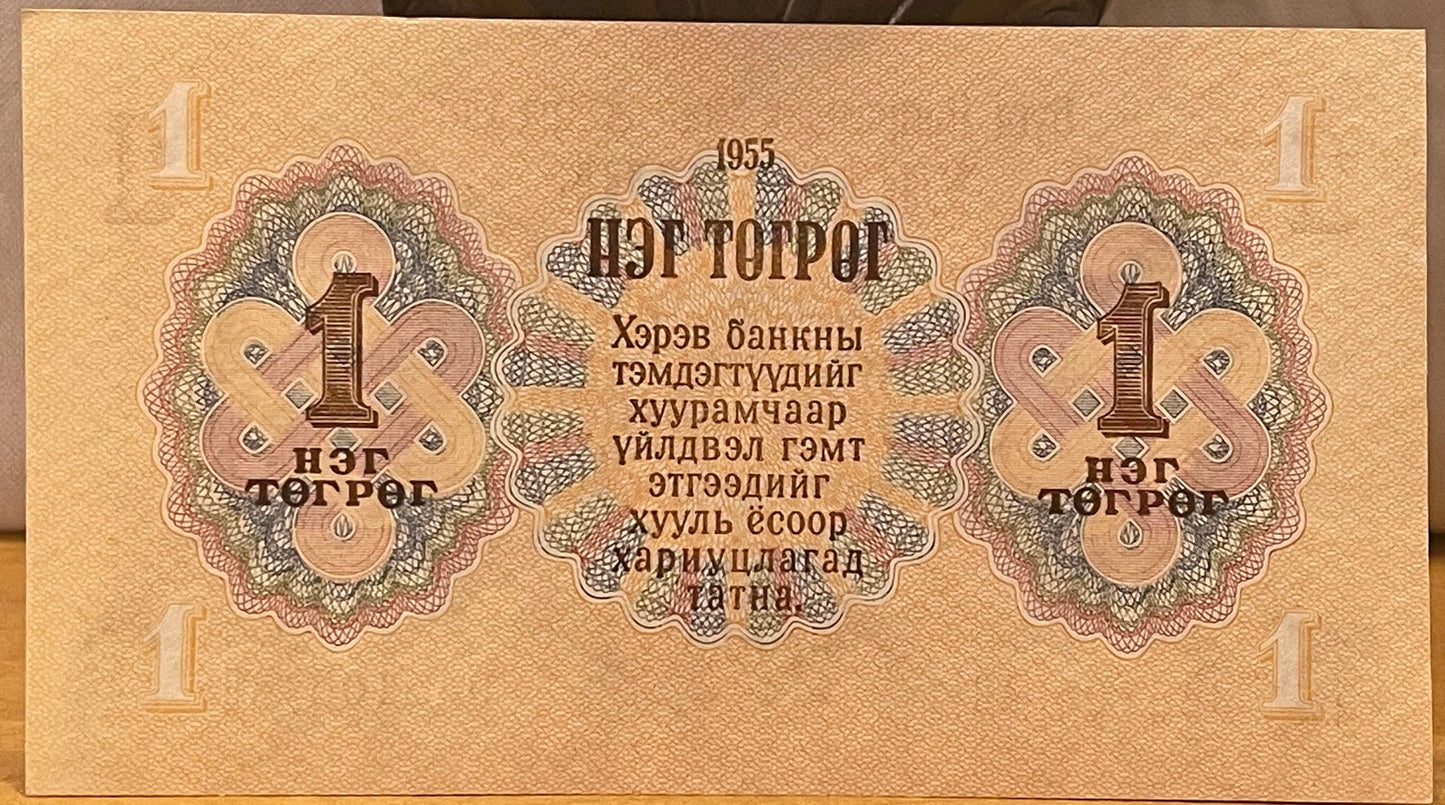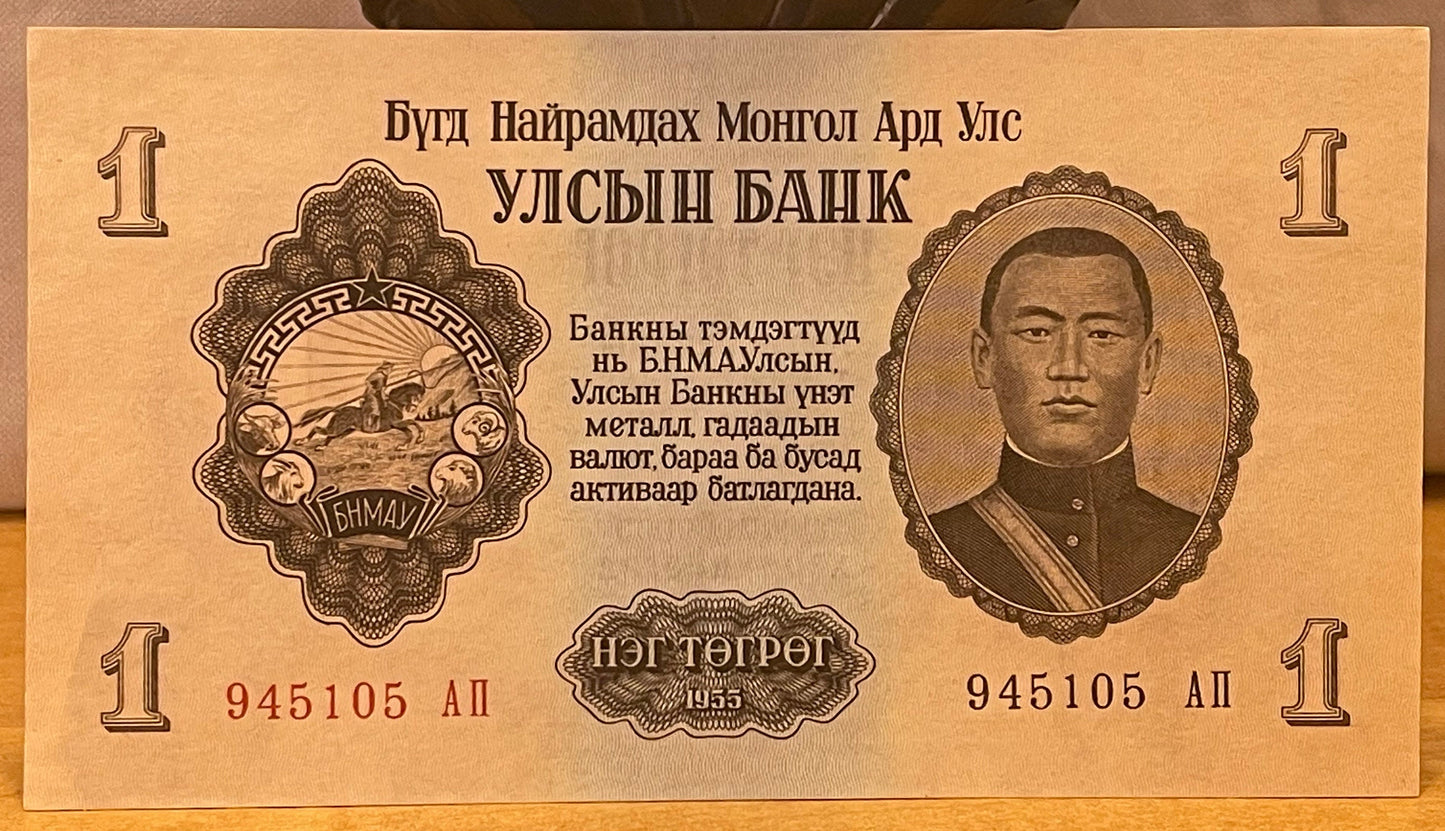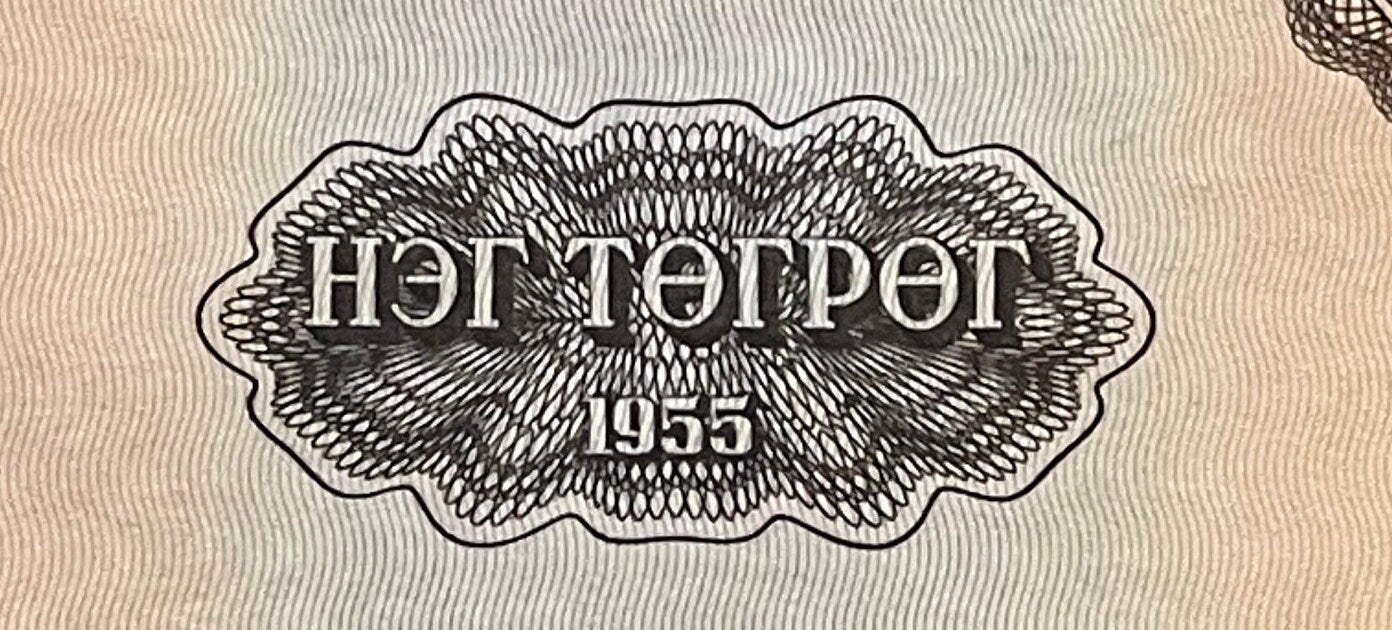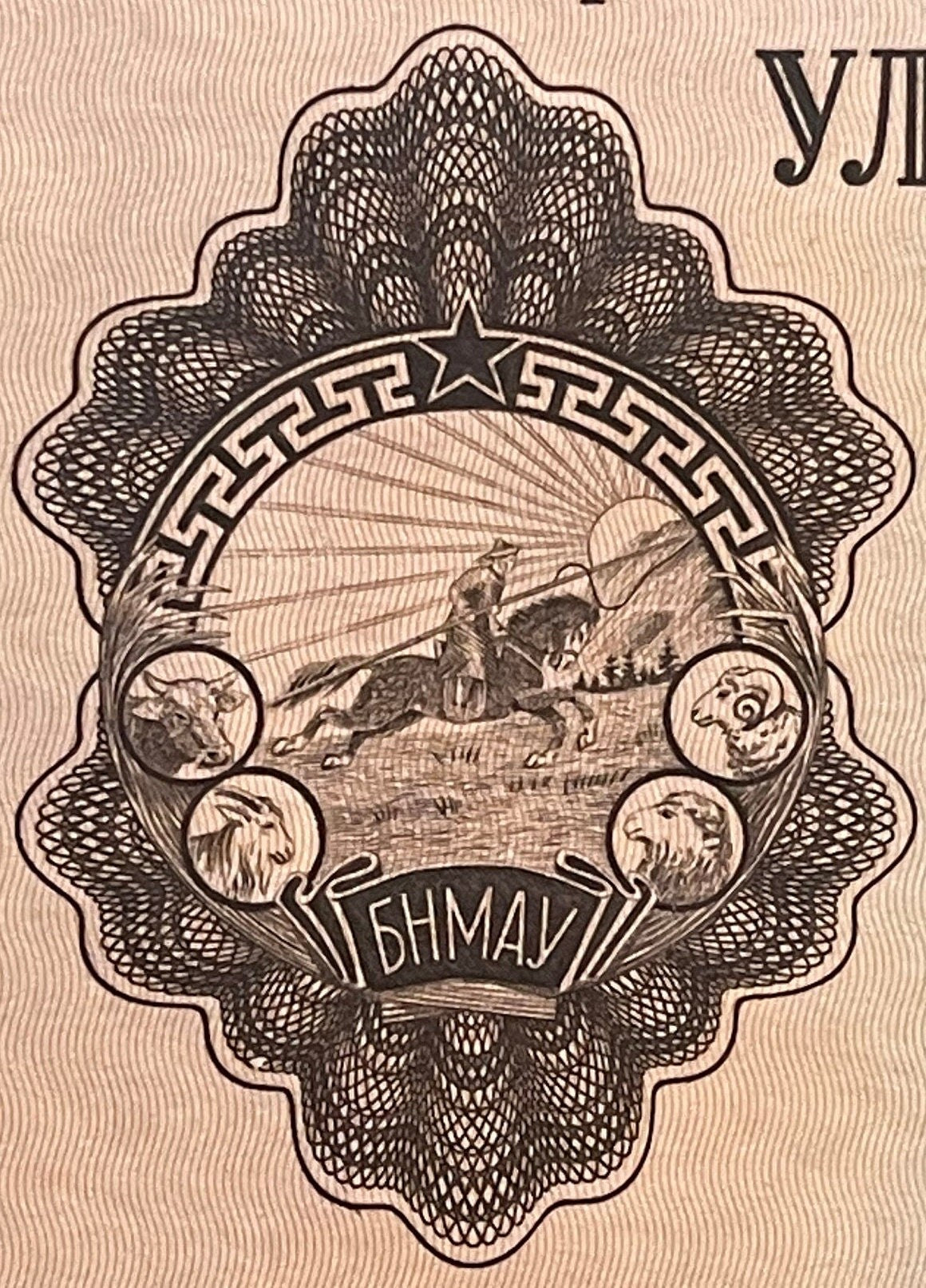elemintalshop
Wind Horse, Revolutionary Damdin Sükhbaatar & Buddhist Endless Knot 1 Tögrög Mongolia Authentic Banknote Money for Collage (Lucky) 1955
Wind Horse, Revolutionary Damdin Sükhbaatar & Buddhist Endless Knot 1 Tögrög Mongolia Authentic Banknote Money for Collage (Lucky) 1955
Couldn't load pickup availability
Wind Horse, Revolutionary Damdin Sükhbaatar & Buddhist Eternal Knots 1 Tögrög Mongolia Authentic Banknote Money for Jewelry and Collage (Endless Knot) (Good Luck) (Soul Symbol)
Obverse: National Coat of Arms with WInd Horse and rider. The Wind Horse is a symbol of the human soul in the shamanistic tradition of East Asia and Central Asia. In Tibetan Buddhism, it was included as the pivotal element in the center of the four animals symbolizing the cardinal directions and a symbol of the idea of well-being or good fortune.
Portrait of Damdin Sükhbaatar (Feb 2, 1893 – Feb 20, 1923), a founding member of the Mongolian People's Party and leader of the Mongolian partisan army that liberated Khüree during the Outer Mongolian Revolution of 1921.
Lettering: Бүгд Найрамдах Монгол Ард Улс
УЛСЫН БАНК
Банкны тэмдэгтүүд
нь Б.Н.М.А.Улсын.
Улсын банкнын үнэт
металл, гадаадын
валют, бараа ба бусад
активаар батлагдана.
НЭГ ТӨГРӨГ
1955
Translation: Mongolian People's Republic, State Bank, The banknotes are issued by the Bank of the Mongolian People's Republic. It is approved by precious metals, foreign currencies, goods, and other assets of the state bank, One Tögrög
Reverse: Buddhist "Eternal Knots"
Lettering: 1955
НЭГ ТӨГРӨГ
Хэрэв банкны
тэмдэгтүүдийг
хуурамчаар
үйлдвэл гэмт
этгээдийг
хууль ёсоор
хариуцлагад
татна
Translation: One Tögrög, Counterfeit of the banknotes is punishable by law
Features
Issuer Mongolia
Period People's Republic (1924-1992)
Type Standard banknote
Year 1955
Value 1 Tögrög (1 MNT)
Currency Tögrög (1925-date)
Composition Paper
Size 145 × 80 mm
Shape Rectangular
Demonetized 1966
Number N# 203169
References P# 28
Wikipedia:
The wind horse is a symbol of the human soul in the shamanistic tradition of East Asia and Central Asia. In Tibetan Buddhism, it was included as the pivotal element in the center of the four animals symbolizing the cardinal directions and a symbol of the idea of well-being or good fortune. It has also given the name to a type of prayer flag that has the five animals printed on it. Depending on the language, the symbol has slightly different names. Tibetan: རླུང་རྟ་, Wylie: rlung rta, pronounced lungta, Tibetan for "wind horse"
Mongolian: хийморь, Khiimori, literally "gas horse," semantically "wind horse," colloquial meaning soul.
Old Turkic Yel Tayi foal of the wind.
....Before 1961, the (Mongolian coat of arms') emblem's horseman carried a long lasso pole and the heads of four types of herd animals were shown on the sides. A red ribbon at the bottom bore the name of the country in the traditional Mongolian alphabet.
********
Wikipedia: The Mongol Horse (Mongolian Адуу, aduu: "horse" or mori; or as a herd, ado) is the native horse breed of Mongolia. The breed is purported to be largely unchanged since the time of Genghis Khan. Nomads living in the traditional Mongol fashion still hold more than 3 million animals, which outnumber the country's human population. In Mongolia, the horses live outdoors all year, dealing with temperatures from 30 °C (86 °F) in summer down to −40 °C (−40 °F) in winter, and they graze and search for food on their own. The mare's milk is processed into the national beverage airag. Some animals are slaughtered for meat. Other than that, they serve as riding and transport animals; they are used both for the daily work of the nomads and in horse racing.
Mongol horses were a key factor supporting the 13th-century conquests of the Mongol Empire.
The Mongols have many stories and songs about horses. Legendary horses include magical flying steeds, beloved horses that visit in dreams, and a rich body of folklore about equine protagonists. The horse has long played a role as a sacred animal, and Mongols have a variety of spiritual beliefs regarding them. The mane is believed to contain a horse's spirit and strength; for this reason, the mane of stallions is always left uncut. Mare's milk has been used in ceremonies of purification, prayer, and blessing since antiquity. In modern times, it continues to be used in a variety of ceremonies associated with racing. Historically, horses were sacrificed on special occasions; 40 horses were sacrificed at the funeral of Genghis Khan. When a horse is killed, a variety of rituals may be followed to honor the remains. Horses are believed to have spirits that can help or hurt their owner after death. When a deceased horse's spirit is content, the owner's herd will flourish; if not, then the herd will fail.
******
Wikipedia: Damdin Sükhbaatar (Mongolian: Дамдины Сүхбаатар, Damdinii Sykebaatar, ᠳᠠᠮᠳᠢᠨ ᠤ
ᠰᠦᠬᠡᠪᠠᠭᠠᠲᠤᠷ; February 2, 1893 – February 20, 1923) was a founding member of the Mongolian People's Party and leader of the Mongolian partisan army that took Khüree during the Outer Mongolian Revolution of 1921. For his part in the Outer Mongolian revolution of 1921, he was enshrined as the "Father of Mongolia's Revolution".
********
Wikipedia:
The Mongolian Revolution of 1921 (Outer Mongolian Revolution of 1921, or People's Revolution of 1921) was a military and political event by which Mongolian revolutionaries, with the assistance of the Soviet Red Army, expelled Russian White Guards from the country, and founded the Mongolian People's Republic in 1924. Although nominally independent, the Mongolian People's Republic was a satellite state of the Soviet Union until a third Mongolian revolution in January 1990. The revolution also ended the Chinese Beiyang government's occupation of Mongolia, which had begun in 1919. The official Mongolian name of the revolution is "People's Revolution of 1921" or simply "People's Revolution" (Mongolian: Ардын хувьсгал).
*******
Wikipedia:
The endless knot or eternal knot (Sanskrit: śrīvatsa; simplified Chinese: 盘长结; traditional Chinese: 盤長結; pinyin: pánzhǎng jié; Tibetan དཔལ་བེའུ། dpal be'u; Mongolian Түмэн өлзий) is a symbolic knot and one of the Eight Auspicious Symbols. It is an important symbol in Hinduism, Jainism and Buddhism. It is an important cultural marker in places significantly influenced by Tibetan Buddhism such as Tibet, Mongolia, Tuva, Kalmykia, and Buryatia. It is also found in Celtic and Chinese symbolism.
History
The endless knot symbol appears on clay tablets from the Indus Valley Civilization (2500 BC), and the same symbol also appears on a historic era inscription.
Interpretations
Buddhism
Various Buddhist interpretations of the symbol are:
The endless knot iconography symbolised Samsara i.e., the endless cycle of suffering of birth, death and rebirth within Tibetan Buddhism.
The inter-twining of wisdom and compassion.
Interplay and interaction of the opposing forces in the dualistic world of manifestation, leading to their union, and ultimately to harmony in the universe.
The mutual dependence of religious doctrine and secular affairs.
The union of wisdom and method.
The inseparability of emptiness (shunyata) and dependent origination, the underlying reality of existence.
Symbolic of knot symbolism in linking ancestors and omnipresence (refer etymology of Tantra, Yoga and religion) (see Namkha.)
Since the knot has no beginning or end it also symbolizes the wisdom of the Buddha.
Hinduism
In Hinduism, Srivatsa mentioned as 'connected to shree', i.e the goddess Lakshmi. It is a mark on the chest of Vishnu where his consort Lakshmi resides. According to the Vishnu purana, the tenth avatar of Vishnu, Kalki, will bear the Shrivatsa mark on his chest. It is one of the names of Vishnu in the Vishnu Sahasranamam. Srivatsa is considered to be auspicious symbol in Andhra Pradesh, Telangana, Tamil Nadu and Karnataka.
Jainism
In Jainism it is one of the eight auspicious items, an asthamangala, however found only in the Svetambara sect. It is often found marking the chests of the 24 Saints, the tirthankaras. It is more commonly referred to as the Shrivatsa.
Share
